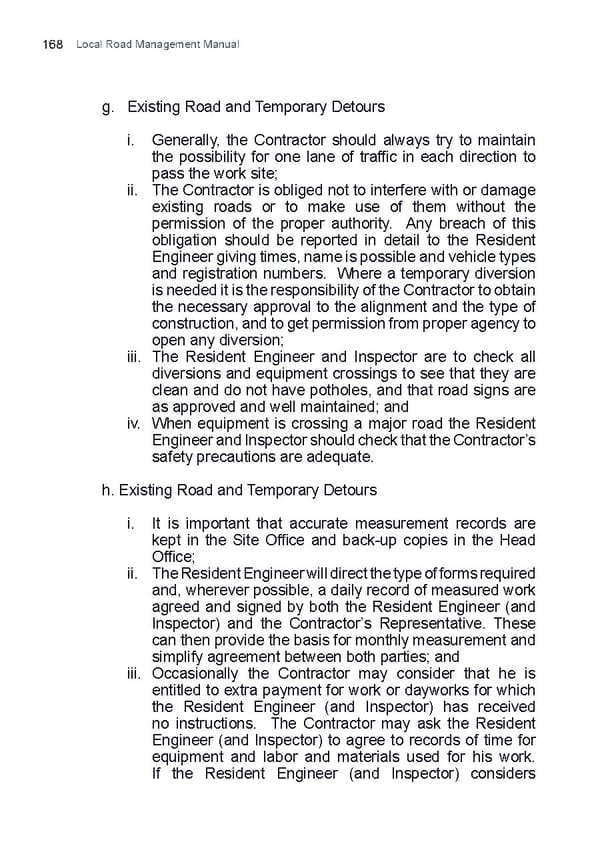Local Road Management Manual 168 g. Existing Road and Temporary Detours i. Generally, the Contractor should always try to maintain the possibility for one lane of traffic in each direction to pass the work site; ii. The Contractor is obliged not to interfere with or damage existing roads or to make use of them without the permission of the proper authority. Any breach of this obligation should be reported in detail to the Resident Engineer giving times, name is possible and vehicle types and registration numbers. Where a temporary diversion is needed it is the responsibility of the Contractor to obtain the necessary approval to the alignment and the type of construction, and to get permission from proper agency to open any diversion; iii. The Resident Engineer and Inspector are to check all diversions and equipment crossings to see that they are clean and do not have potholes, and that road signs are as approved and well maintained; and iv. When equipment is crossing a major road the Resident Engineer and Inspector should check that the Contractor’s safety precautions are adequate. h. Existing Road and Temporary Detours i. It is important that accurate measurement records are kept in the Site Office and back-up copies in the Head Office; ii. The Resident Engineer will direct the type of forms required and, wherever possible, a daily record of measured work agreed and signed by both the Resident Engineer (and Inspector) and the Contractor’s Representative. These can then provide the basis for monthly measurement and simplify agreement between both parties; and iii. Occasionally the Contractor may consider that he is entitled to extra payment for work or dayworks for which the Resident Engineer (and Inspector) has received no instructions. The Contractor may ask the Resident Engineer (and Inspector) to agree to records of time for equipment and labor and materials used for his work. If the Resident Engineer (and Inspector) considers
 Local Road Management Manual Page 168 Page 170
Local Road Management Manual Page 168 Page 170